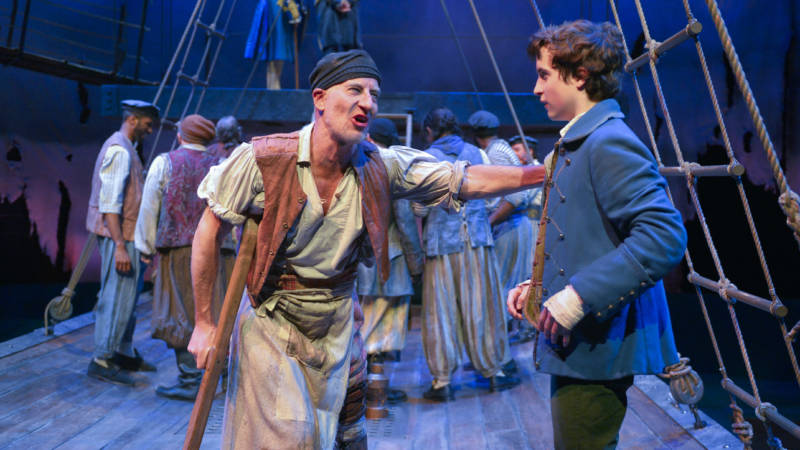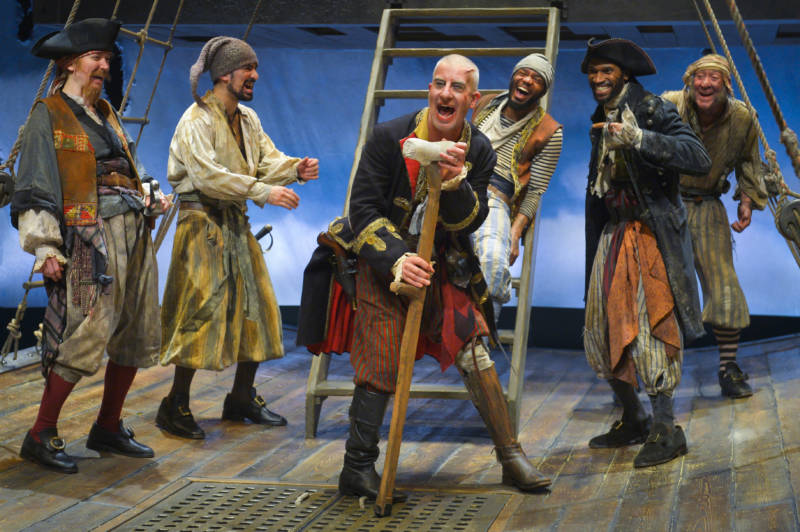There are many exceptional qualities to Mary Zimmerman’s adaptation of Robert Louis Stevenson’s Treasure Island at the Berkeley Repertory Theatre. And the first and most obvious is the famed American director’s desire to catch a state of mind, a way of seeing the world that is peculiar to young boys. Jim Hawkins, the young protagonist of Stevenson’s classic adventure novel, is caught somewhere between despair (his father has died) and domestic servitude (he works in the family pub). Jim is both too old for his years and oppressed by circumstance. It is the perfect recipe for dreaminess and rash action.
We feel all of Jim’s contradictory impulses in Todd Rosenthal’s beautifully designed set, T.J. Gercken’s lighting, and Ana Kuzmanic’s costumes. The ripped and ragged scrim, a shifting kaleidoscope of deep blues and oranges, captures the twin poles of Jim’s world — the sea that promises escape and the sun that presages awareness and knowledge. Under Gercken’s subtle lighting, the dance between the two is as surprising as Stevenson’s crazy pirate tale.
The massive platform that bisects the stage is imposing, yet transitory. It’s a dock, a schooner, an abandoned military garrison. Each time it shifts we understand that for Jim, wherever he goes, the world is both overwhelming and in danger of drifting away.

That is part of the beauty of Stevenson’s vision of youth: we want to escape, to get away fast, but we’re also desperate for solid ground. For a boy whose home and family are crumbling, this dash to the sea for adventure, camaraderie, and treasure is a last gasp attempt for a freer, richer life. How many disadvantaged boys in America must feel the same, not to mention the rest of the world?
What’s clear in both Stevenson’s novel and Zimmerman’s production is that pirates are both the catalyst for — and the barrier to — Jim’s hopes. Without them he goes nowhere. But with them he is in constant danger of losing his soul and life. It is an achingly painful predicament, and one that Jim barely understands. His lack of awareness makes it all the more painful to watch.



